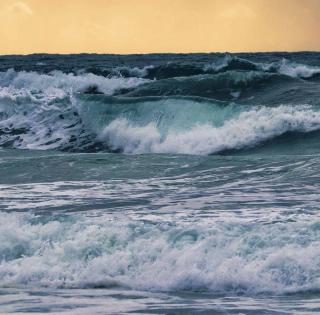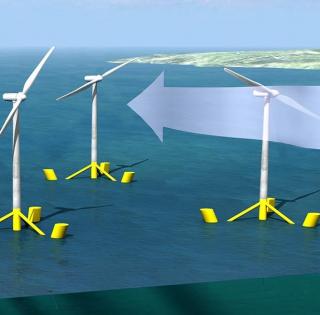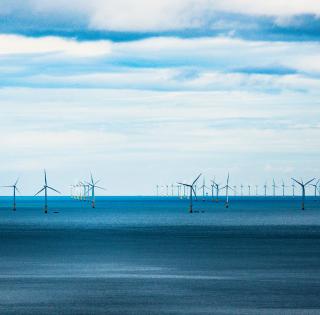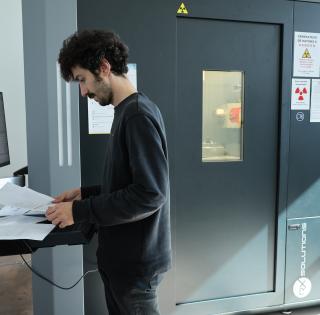
Caption: At ENSTA Bretagne, the team involved in the project includes Michel Arrigoni (right), a professor at ENSTA Bretagne, and Erwan Tanné, a post-doctoral student.
The challenge: to protect people from ballistic impacts
The Probalcav project is an innovative concept aimed at protecting people from ballistic impacts.
The research sets out to provide a new form of protection. The device consists of an assembly of materials containing a cavitating fluid: gas bubbles form on impact. Thanks to this mechanism, reactivity is possible in just a few microseconds.
It has both civilian and military applications: the device could thus be deployed in land vehicles, aircraft, bulletproof windows, helmets and visors for example.
4 experimental facilities harnessed to test the multi-material assembly
To validate the protection device, experiments are being conducted in lab conditions. The four test facilities being used for the experiments have several factors in common: they all contain a tank filled with water that is separated from the projectile by a plate (e.g. an aluminum plate). The projectile used in the various test facilities differs.
The fluid is filmed at a rate of hundreds of thousands of images a second using a high-speed camera.
In all of the experimental set-ups, the impact generates a shock wave which crosses through the plate into the water. At that moment, the acceleration of the water generates a cavitation bubble which expands and stores the energy captured from the shock wave. This energy will be released sparingly, so that it becomes easier to absorb by the tank, thereby increasing the chances of survival on impact.
The various test facilities will yield better insight into shock-induced cavitation and enable its effects to be geared towards protection against ballistic impacts.

Shock tube
Projectile: excess air pressure – target: aluminum plate – reinforcement: water

Laser peening
Projectile: laser peening – target: plate – reinforcement: water

Image filmed by a high-speed camera at a rate of 200k images/sec of a bubble induced by laser peening at the interface between the aluminum plate and the water.

Gun
Projectile: marble – target: plate – reinforcement: water

Split Hopkinson Pressure Bar (SHPB)
Projectile: bar – target: plate – reinforcement: water

Image of a bubble imploding due to the water detaching from the bar interface during an SHPB test.
* The PROBALCAV program is supported by the French National Research Agency (ANR) and co-funded by the French Government Defense Procurement and Technology Agency (DGA).
(1) IRDL: Laboratory for mechanical systems
(2) IJLRDA: Institut Jean Le Rond d'Alembert
(3) CNRS: French National Center for Scientific Research





















